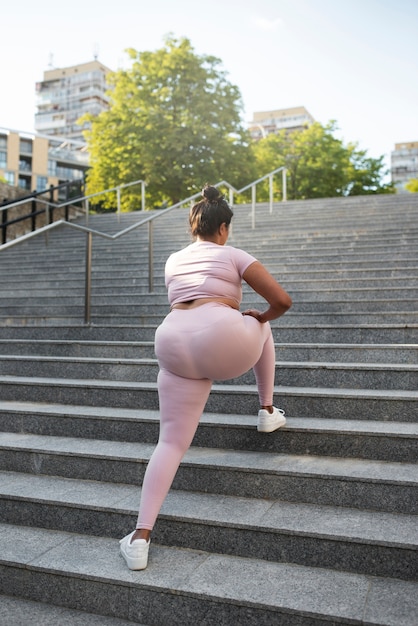
To look your best at any age, especially after 40, it’s important to dress according to your vertical body type. The first step in doing this is understanding your body proportions.
While we’ve previously discussed horizontal body types, knowing your vertical body type is equally crucial.
Why It’s Important to Know Your Vertical Body Type
Ever wonder why some outfits just don’t seem right? It usually comes down to proportions. The key is paying attention to your silhouette and the “golden ratio,” also known as the rule of thirds. The golden ratio is a balanced and pleasing proportion found in nature, art, and architecture, like the Eiffel Tower. It can also be applied to fashion to create harmonious looks.
But to use this effectively, you need to understand your vertical body proportions.
What Is Your Vertical Body Type?
The body can be divided into four parts:
1. From the top of your head to your nipple line (while wearing a bra).
2. From the nipple line to the hip line (the fullest part of your bottom).
3. From the hip line to the center of your kneecap.
4. From the kneecap to the floor.
Most people fall into one of three main categories:
The Balanced Body
You have this vertical body type if:
– Your upper body length is almost the same as your lower body length.
– The length from your hipline to the ground is half your total height.
– Your waist is aligned with your bent elbow.
– The segments were roughly even in length.
Many petite women (<160 cm or 5'3") have this body type. As they age, weight gain around the waist can make them feel short-waisted. How to Dress for a Balanced Vertical Body Type - Your goal is to lengthen the segments from bust to hip and hip to knee for a better proportion. - Wear medium to long tops to create a 2/3 to 1/3 proportion rather than 1/2 and 1/2. - Avoid tucking in your tops. - Choose pants and skirts without waistbands or with narrow waistbands. - Opt for monochromatic outfits and avoid contrasting colors at the waistline. - Wear dresses that flow through the waist to create a 2/3 proportion. - Avoid wide belts and empire waist dresses. Long Legs, Short Torso This body type is common among tall women, although there are exceptions. You have this body type if: - Your legs are much longer than your torso. - The height from the ground to your hip is more than half your full height. - You seem high-waisted, higher than your bent elbow. - Weight gain tends to be around the midriff. How to Dress for Long Legs, Short Torso Vertical Body Type - Your goal is to visually lengthen your torso for better balance. - Leave blouses untucked to elongate the waist. - Wear long jackets and tops. - Use accessories that draw the eye downward. - Choose skirts and pants without waistbands. - Opt for low-waisted skirts and pants. - Use narrow, non-contrasting belts. - Wear low to medium heels. Short Legs, Long Torso Usually seen in women who are short to average height, you have this body type if: - Your upper body is longer than your lower body. - You have a low, heavy bottom. - Weight tends to accumulate on the thighs and bottom. How to Dress for Short Legs, Long Torso Vertical Body Type - Your goal is to lengthen your legs and shorten your torso. - Wear short to medium-long tops and jackets. - If your horizontal body type allows, tuck in your tops. - Accessorize to focus on the upper body. - Opt for straight skirts instead of A-lines or flared skirts. - Wear medium to wide belts. - Classic wide pants look great on you. - Match the color of your socks, shoes, and bottoms. - Wear heels. - Avoid cropped pants. - Avoid tight, tapered skirts and pants. - Avoid skirts and trousers with a dropped waistband. Example: Dressing for Your Body Type Makes a Difference If you have long torso and short legs like I do, dressing correctly can make a big difference. Preferably, avoid wearing belts and low-waisted skirts, even though they may feel more comfortable. When I dress to emphasize my upper half and follow the rules, my legs look longer. The silhouette on the left shows how boxy and unflattering the wrong outfit can be. On the right, the proper attire makes me appear to have longer legs. Remember, these guidelines are just that—guidelines. Everyone is unique, and you don't have to follow these rules strictly to dress well.